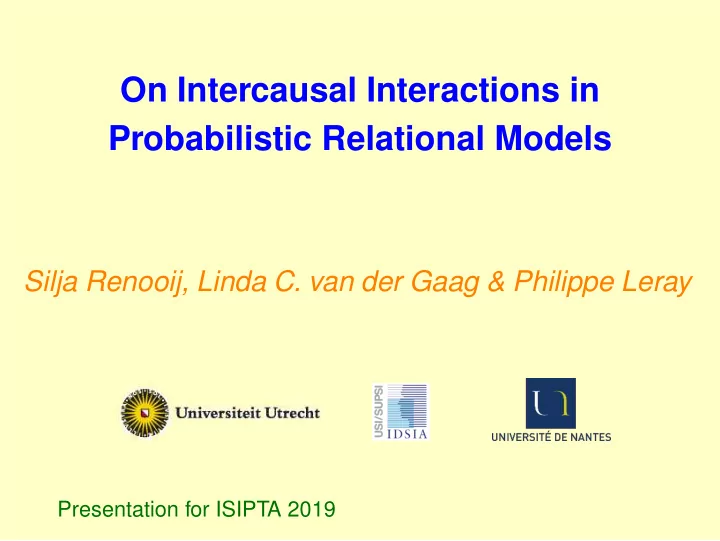

On Intercausal Interactions in Probabilistic Relational Models Silja Renooij, Linda C. van der Gaag & Philippe Leray Presentation for ISIPTA 2019
Probabilistic Relational Model (PRM) • Extends Bayesian network to work with relational information • Expresses a joint probability distribution over all possible instantiations of a relational schema Example adapted from L. Getoor
Probabilistic Relational Model (PRM) • Provides a template or meta-model covering all possible instantiations
Probabilistic Relational Model (PRM) • Provides a template or meta-model covering all possible instantiations • Many-to-one dependencies are described by aggregators (functions such as MEAN , (stochastic) MODE , logical OR ,. . . )
Inference in PRMs • Concerns a concrete instance • Is performed in a Ground Bayesian network (GBN); • The GBN replicates attributes for the given instance • An aggregator is encoded in the CPT of an additional random variable
Questions & Approach Replication induces causal interaction patterns upon inference in the GBN, not directly obvious from the PRM. • Do PRM properties constrain the set of interaction patterns? • If so, is every type of interaction possible? ( − explaining-away ; + explaining-in ; 0 no interaction)
Questions & Approach Replication induces causal interaction patterns upon inference in the GBN, not directly obvious from the PRM. • Do PRM properties constrain the set of interaction patterns? • If so, is every type of interaction possible? ( − explaining-away ; + explaining-in ; 0 no interaction) We answer these questions • for the interaction between two binary-valued variables • involved in an aggregation (many-to-one relationship) • by studying the space of possible CPTs for the aggregator • using ’tools’ from qualitative probabilistic networks
Recommend
More recommend